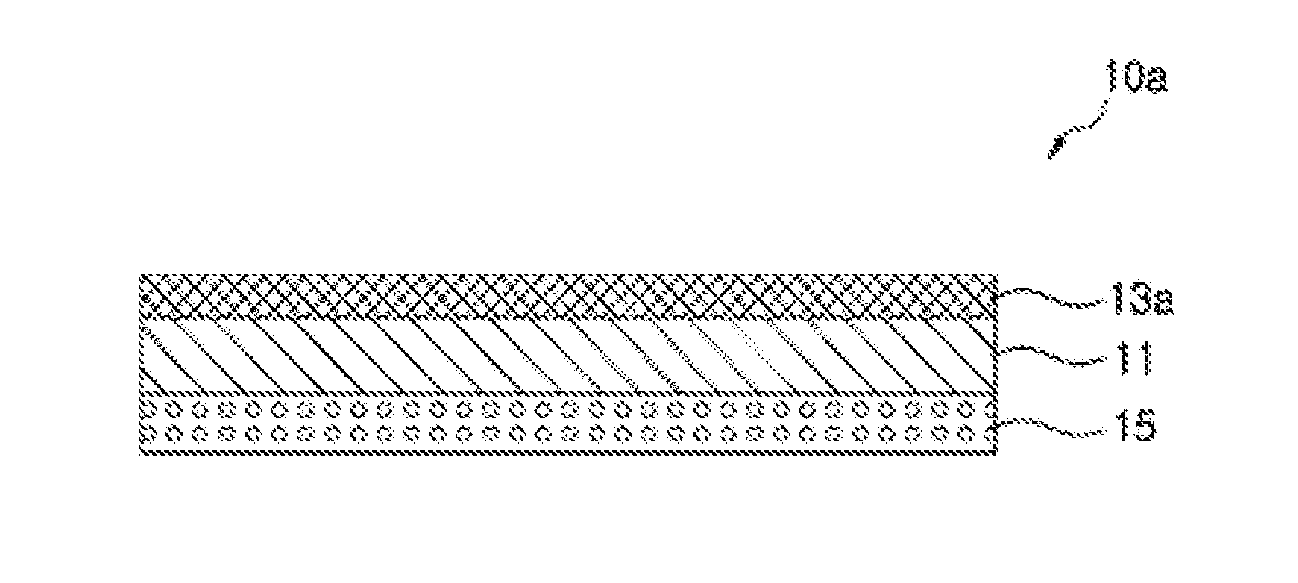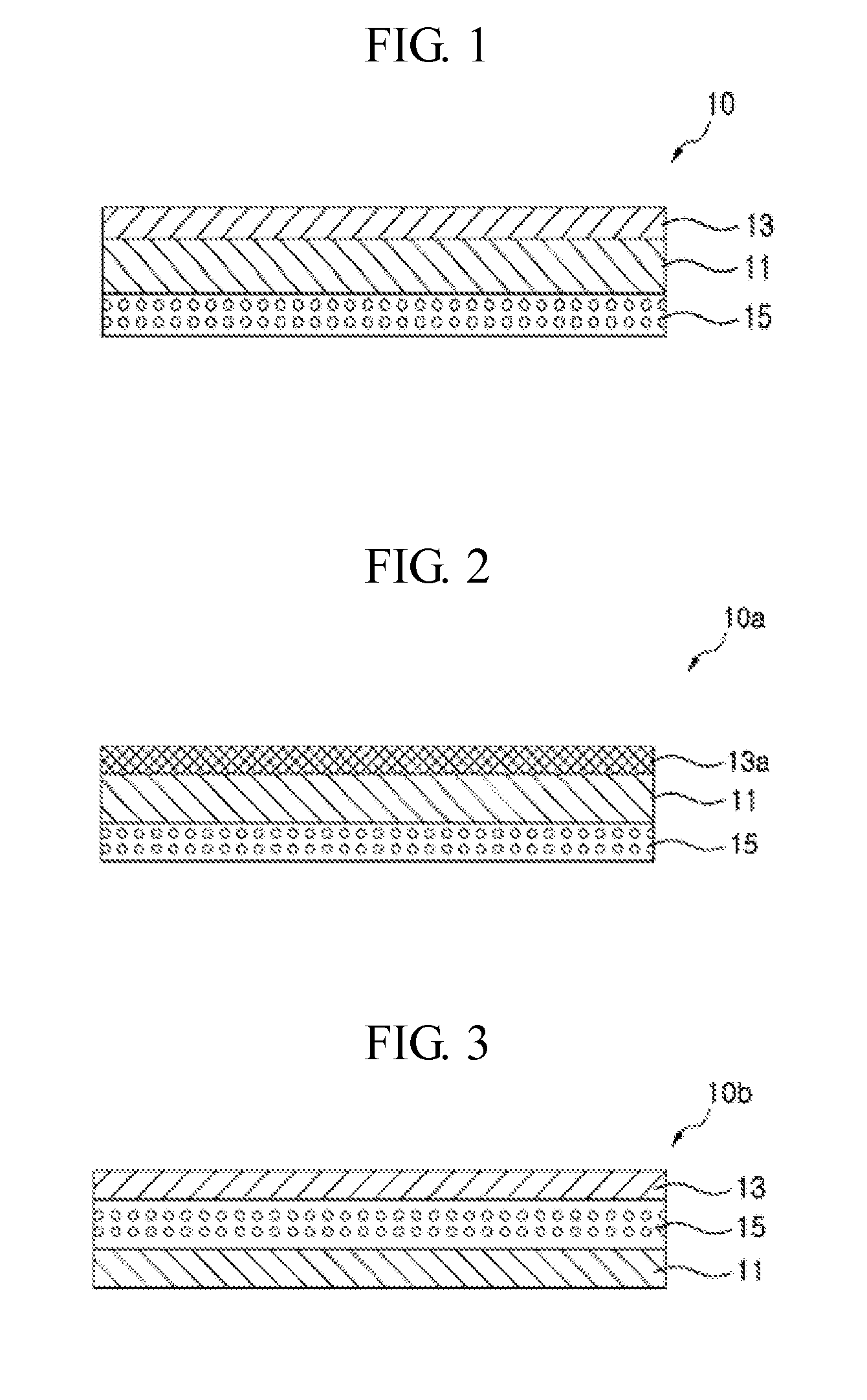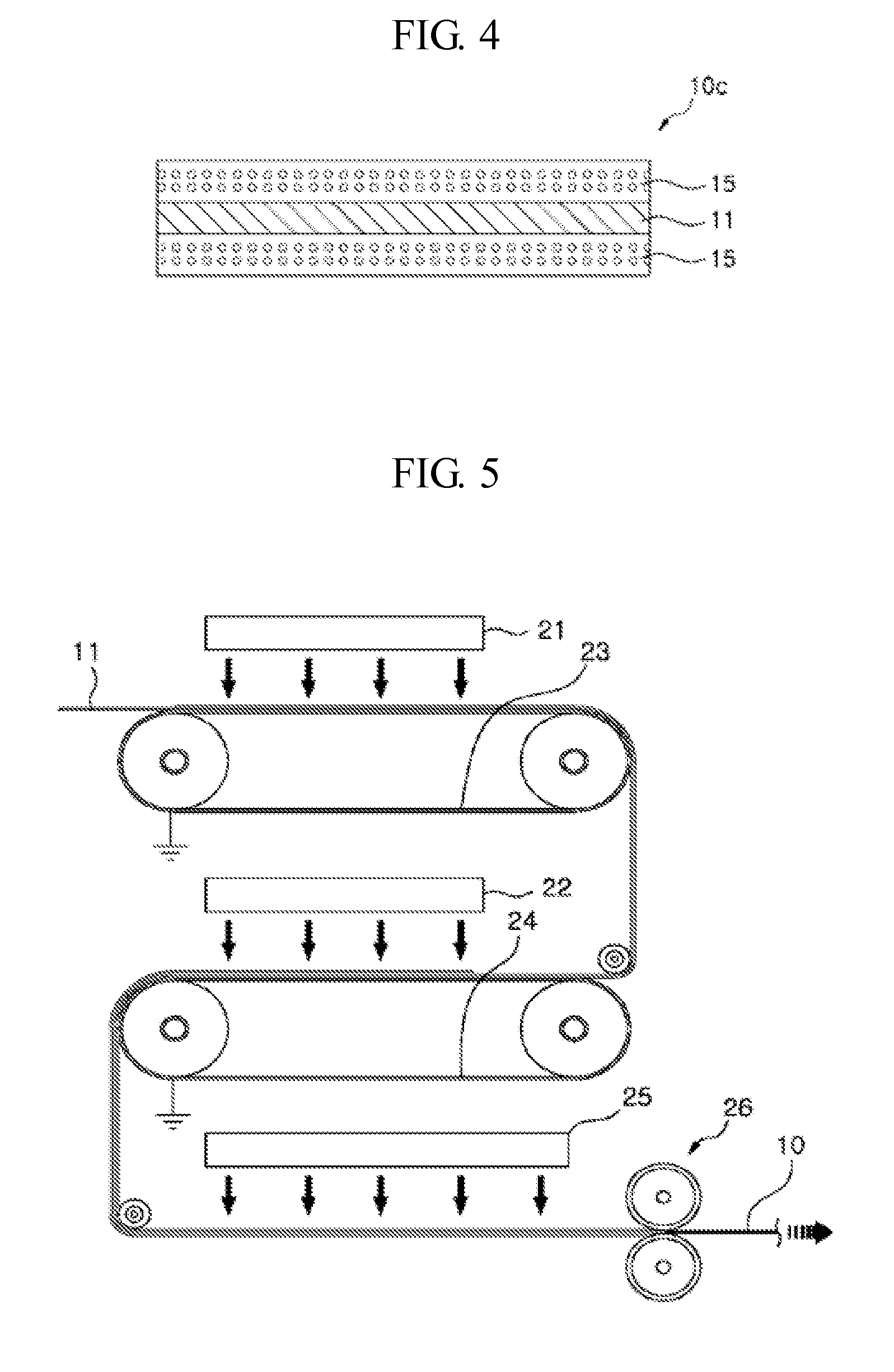Composite porous separation membrane having shut-down function, method of manufacturing same, and secondary batteries using same
a technology of porous separation membrane and composite porous membrane, which is applied in the direction of battery, sustainable manufacturing/processing, cell components, etc., can solve the problems of battery circuit, deterioration of safety, and lowering of battery performan
- Summary
- Abstract
- Description
- Claims
- Application Information
AI Technical Summary
Benefits of technology
Problems solved by technology
Method used
Image
Examples
first embodiment
[0042]First, as shown in FIG. 1, a composite porous separator 10 according to the present invention has a shutdown function, and includes a first porous polymer web layer 13 acting as an adhesive layer and a second porous polymer web layer 15 containing an electrolytic solution as a heat-resistant support on both sides of a porous substrate 11 used as a support, respectively.
[0043]The porous substrate 11 is set to have a melting point relatively lower than the first porous polymer web layer 13 and the heat-resistant second porous polymer web layer 15 laminated on both sides of the porous substrate 11, to thereby make the separator have a shutdown function when the temperature rise is achieved.
[0044]For this purpose, the porous substrate 11 may employ a porous membrane made of polyethylene (PE) whose melting point is about 120° C., or a nonwoven fabric made of a PP / PE or PET fiber, in consideration of safety of a secondary battery in which boiling of an electrolytic solution occurs a...
second embodiment
[0050]Further, in the case that the porous substrate 11 is made of a nonwoven fabric formed of PP / PE or PET fibers, the nonwoven fabric has too large pores and thus the first porous polymer web layer 13 is transformed into a non-pore polymer film layer 13a to preferably use the thin-film non-pore polymer film layer 13a in place of the first porous polymer web layer 13 to lower the porosity of the porous substrate 11 on one side of the porous substrate 11, like the separator 10a of the second embodiment shown in FIG. 2.
[0051]The first porous polymer web layer 13 and the non-pore polymer film layer 13a are swelled in the electrolyte solution, and may be made of any one of a polymer capable of conducting the electrolytic ions, for example, PVDF (polyvinylidene fluoride), PEO (polyethylene oxide), PMMA (polymethyl methacrylate), TPU (thermoplastic polyurethane). In this case, the PVDF is the most preferable polymer having a swelling property in the electrolyte solution, enabling the ele...
third embodiment
[0071]That is, the composite porous separator 10b according to the present invention is configured by sequentially laminating the mineral-containing second porous polymer web layer 15 and the first porous polymer web layer 13 on any one side of the porous substrate 11 in the case that the porous substrate 11 is made of a PE porous membrane.
[0072]The laminated structure of the second porous polymer web layer 15 containing inorganic materials and the first porous polymer web layer 13 is configured by the following processes of: preparing a multi-hole nozzle pack in which a plurality of first spinning nozzles and a plurality of second spinning nozzles are disposed along the traveling direction of a collector; spinning a second spinning solution from the second spinning nozzles on the upper surface of the porous substrate 11, to thus form the mineral-containing second porous polymer web layer 15; spinning a first spinning solution from the first spinning nozzles on the upper surface of ...
PUM
| Property | Measurement | Unit |
|---|---|---|
| porosities | aaaaa | aaaaa |
| porosities | aaaaa | aaaaa |
| size | aaaaa | aaaaa |
Abstract
Description
Claims
Application Information
 Login to View More
Login to View More - R&D
- Intellectual Property
- Life Sciences
- Materials
- Tech Scout
- Unparalleled Data Quality
- Higher Quality Content
- 60% Fewer Hallucinations
Browse by: Latest US Patents, China's latest patents, Technical Efficacy Thesaurus, Application Domain, Technology Topic, Popular Technical Reports.
© 2025 PatSnap. All rights reserved.Legal|Privacy policy|Modern Slavery Act Transparency Statement|Sitemap|About US| Contact US: help@patsnap.com



